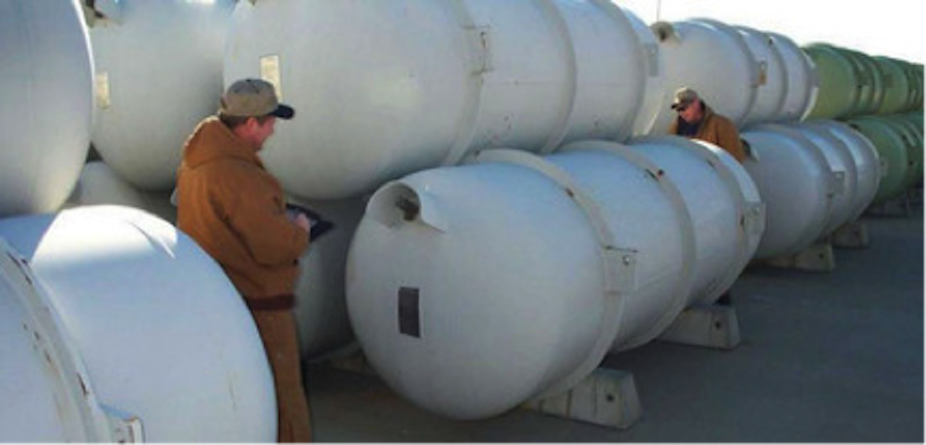The world is searching for a “holy grail”: zero-carbon electricity provided safely and reliably, 24 hours a day, in any given location and in quantities that matter for a world that is heading for 10 billion people.

We are told to expect a “portfolio” of solutions, but this is a little deceptive. Right now, just five basic sources (coal, gas, hydro, nuclear and oil) provide over 97% of global electricity, with the fossil fuels making up 67%. And time is against us.
What technologies can step up, take the place of that 67% and the growth to come? What technologies are capable of doing the heavy lifting?
Some say the time has truly arrived for nuclear power, which is already providing 15% of global electricity. But nuclear expansion has been hamstrung by concerns that, while having basis in fact, are blown out of proportion.
The main concerns are:
- operational safety (for example, meltdown)
- high-level waste
- uranium mining
- availability of fuel
- proliferation of fissile material.
Some nuclear bashing is pure myth. Can nuclear generators get insurance? Yes, it’s an easily checkable fact. Do they produce high greenhouse gas across the full life cycle? No, current reactors are about equivalent in this regard to wind and solar; advanced reactor systems will beat both of them.
On other matters, nuclear is serially deprived of context, and so painted a villain. Despite being way safer than coal, gas, and hydro, we only hear that nuclear is dangerous.
Nuclear power captures and contains operational waste. Fossil fuels dump greenhouse gas, heavy metals, particulates and other nasties into the environment all day, every day. But two million deaths per year from air pollution, with fossil fuels a major contributor, are apparently a non-issue when trying to keep people scared of radiation.
Uranium’s energy density is about 20,000 times higher than coal using current light water reactors. That means much less of what we don’t like (energy mining impacts) for what we need (energy). In the real world, that’s called responsible decision making. In anti-nuclear campaigning, it’s called “cognitive dissonance”.


Reasonable or not, these concerns hold sway. But they are about to disappear thanks to an amazing Generation IV reactor design: the Integral Fast Reactor (IFR).
Here’s how it works. The spent fuel from current light water reactors, that we know as high level waste, is about 93% uranium, 2% plutonium and 5% fission products (the true waste)¹. The uranium is almost entirely the more plentiful and heavier isotope U-238 which, unlike the rarer U-235, is mostly left unused in today’s commercial reactors.
The IFR consumes it all, and all the plutonium, converting it into energy. That increases the energy density of uranium about 150 times.

The flow of implications is astonishing. There is no longer any need to worry about fuel availability. In spent fuel and depleted uranium from enrichment, we have inadvertently stockpiled enough fuel to power a fully developed planet for over 500 years². With IFR, just a golf ball of depleted uranium contains enough energy to meet your every need for your whole life, with plenty of wiggle room.
What’s more, the amount of existing waste (now fuel) starts reducing over time.
After a transition, uranium mining will end. In fact, energy mining as a whole will end, including the far more dangerous and harmful mining of coal, oil and gas. We won’t need it.
These new generators are highly resistant to accidents, including meltdown. The fuel is not a ceramic (metal oxide) like in today’s reactors, it’s a metal alloy. With overheating, metal fuel expands. The expansion causes neutron leakage and this kills the chain reaction. So with metal fuel, you get automatic shutdown, based on physics.
The coolant in the process is a robustly contained liquid metal, sodium. It runs at atmospheric pressure, boils at an extremely high temperature, and does not generate hydrogen, which makes it safer than water as a coolant. This also means that passive safety is possible, with no power required to circulate or pressurise the coolant.
In addition, the sodium that is exposed to the radioactive fuel is isolated from the heat exchange water by double-walled secondary circuit. It’s simple, robust, and safe.

Pairs of IFR units are used to assemble a large (1.8 GWe) power plant, which would include a small on-site pyro-processing facility. The fuel cycles from power production, through reprocessing, to more power production. It never leaves the site until only fission products remain. This is one more proliferation safeguard.
The Science Council for Global Initiatives is working on a framework for international cooperation and standardised designs. Finally, it seems we have a solution to climate and energy that is a match for the problem.
This isn’t science fiction. Argonne National Laboratories in Idaho perfected this technology with the Experimental Breeder Reactor II and ran it for 30 years until the mid-nineties. After being killed by anti-nuclear political expediency, reality is bringing it back to centre stage.

My aim is for broad nuclear acceptance, with help from IFR and other advanced technologies. We can build excellent Generation III+ plants like the AP 1000 that already incorporate passive safety, and reap the huge benefits of getting off fossil fuels right now. We can do so with confidence that the solution to our residual nuclear concerns is on the commercialisation pathway.
In the face of climate change, delayed action in decarbonisation is not a responsible course. It’s time to get excited, learn about IFR and get ourselves ready for a new age. The energy end game has begun.
Thanks to Tom Blees and Barry Brook for technical edits.

